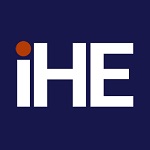No 2022:12: The economic burden of overweight and obesity in Swedish children – A lifetime perspective
Kristoffer Nilsson, Adam Fridhammar, Karin Wahlberg and Katarina Steen Carlsson
Additional contact information
Kristoffer Nilsson: IHE - The Swedish Institute for Health Economics
Adam Fridhammar: IHE - The Swedish Institute for Health Economics
Karin Wahlberg: IHE - The Swedish Institute for Health Economics
Katarina Steen Carlsson: IHE - The Swedish Institute for Health Economics
Abstract: This report from the Swedish Institute for Health Economics presents estimates of the economic burden of obesity in childhood using Swedish data.
The World Health Organisation (WHO) reports that the global prevalence of overweight or obesity among children and adolescents rose from 4% to 18% over four decades between 1975 and 2016. A similar trend of increasing prevalence of overweight and obesity among children and adolescents has been observed in Sweden.
Swelife Prevention Childhood Obesity is a national initiative aiming to prevent overweight and obesity in preschool children aged 0-6 in Sweden. As part of the initiative, Innovation Skåne and the Pediatric unit at Sahlgrenska University Hospital/Västra Götalandsregionen has engaged the Swedish Institute for Health Economics to estimate the costs of overweight and obesity in Swedish children and adolescents over a life-time horizon using a societal perspective.
The report explores the costs of obesity and overweight in children using the following examples
• The individual perspective following the child/adolescent over a life course
– 6-year-old children with obesity and overweight
– 15-year-old adolescents with obesity and overweight
• The national perspective following a birth cohort of 120,000 children over time.
The study provides an estimation of the incremental lifetime cost of obesity or overweight at a specific age as compared to a person of the same sex and with normal weight at the same age. It is important to consider that the calculations take into account that weight status can change throughout life. This means that some overweight/obese children/adolescents will reach normal weight in adulthood and some normal weight children/adolescents will become overweight or obese later in life. Alternative assumptions regarding distribution of adult weight status were tested in sensitivity analyses.
The study estimates costs of resource use in the health care sector and in social services from diseases that have been attributed to obesity and overweight in the literature. The study also estimates the cost burden resulting from production loss due to work absence related to health (i.e., sick leave). No data sources provide direct and complete links between obesity and overweight on the one hand and these outcomes (resource use, production loss) on the other. Instead, the report used established methods for calculating the attributable fraction of health care costs and work absence related to disease using data from national data sources and risk increases from the epidemiological literature. A separate analysis explores the cost of lost production from higher risks of unemployment among people with obesity and overweight compared to normal weight using inputs from a previously published Swedish study on the empirical evidence for an effect on educational level related to obesity and overweight.
The findings indicate that excess weight in childhood and adolescence can contribute to considerable societal costs over a lifetime. The calculations clearly demonstrate that, based on the current situation, healthcare costs contribute to a small proportion of total costs mainly represented by a higher disease burden in adulthood. Instead, the largest proportion of costs are attributed to different types of production losses. The study also shows that, although obesity is more costly than overweight per individual, overweight is more prevalent and thus contributes more to overall costs from the societal perspective.
Keywords: obesity; cost of illness; economic burden; health economics
Language: English
68 pages, First version: 2022. Revised: January 2023. Earlier revisions: January 2023.
Full text files
IHE-Report-2022_12_.pdfFull text
Questions (including download problems) about the papers in this series should be directed to Annette Persson Dietmann ()
Report other problems with accessing this service to Sune Karlsson ().
RePEc:hhs:ihewps:2022_012This page generated on 2024-09-13 22:15:23.

